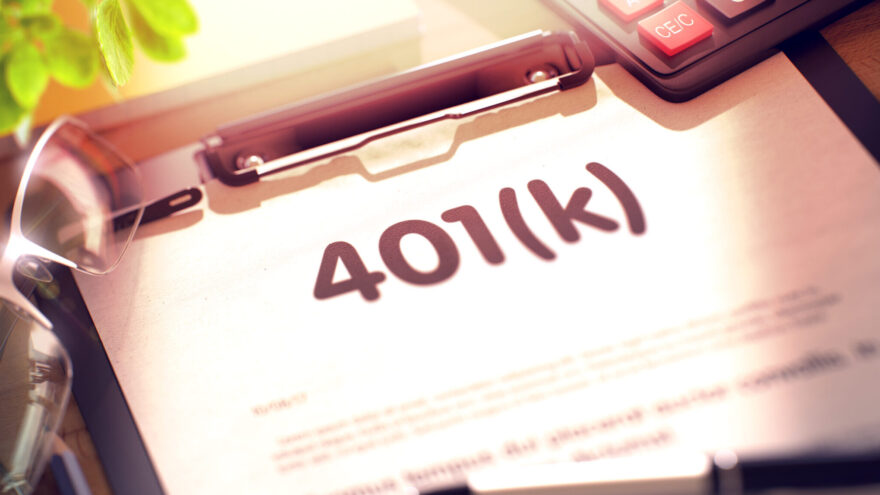A well-diversified portfolio should ideally have both short-term investments, like a savings account, and long-term savings, like a 401k. How you divide your money between these options depends on your financial goals, your timeline, and the features of each account. Below is a comparison to help you decide whether to put your money in a savings account or a 401(k).
Is it Better to Put Money in a Savings Account or 401k?
1. Purpose and Goals
- Savings Account: Best for short-term goals, an emergency fund, or money you may need quick access to.
- 401(k): Intended for long-term retirement savings.
2. Interest and Returns
- Savings Account: Offers low interest rates, usually below inflation. Your money is safe and insured by the FDIC, but it may not grow significantly over time.
- 401(k): Can provide higher returns depending on your investments (stocks, bonds, mutual funds.)
3. Tax Benefits
- Savings Account: Interest earned is taxable each year. There are no tax advantages with savings accounts.
- 401(k): Contributions lower your taxable income for the year, and earnings grow tax-deferred.
4. Accessibility
- Savings Account: Savings accounts are liquid, meaning you can withdraw your money at any time without penalties. This makes them ideal for emergencies or short-term needs.
- 401(k): Funds are less accessible due to penalties for early withdrawal (before age 59 1/2). Loans are available from some 401(k) plans, though this could reduce your retirement savings.
5. Employer Match
- Savings Account: No employer match.
- 401(k): Many employers match contributions, giving you an immediate return on your investment—essentially free money for retirement.
401k vs Savings Account: Which is Better?
- If you need short-term liquidity (e.g., building an emergency fund), a savings account is the better option. It provides safety and easy access.
- If you’re focused on retirement and can leave the money invested for the long term, a 401(k) is better thanks to its tax advantages, growth potential, and employer match.
What Are The Main Disadvantages Of A 401k?
While 401(k)s are extremely useful retirement accounts, they do have a few disadvantages to keep in mind, including:
- Limited investment options, often restricted to a set of funds chosen by your employer.
- Fees and expenses can reduce your returns, particularly with high-cost plans.
- Early withdrawals before age 59 ½ incur a 10% penalty plus taxes, making your funds less accessible.
- Required minimum distributions (RMDs) at age 73 may force withdrawals even if you don’t need the money, potentially leading to higher tax burdens.
- 401(k) accounts are tied to your employment, which can be problematic if you change jobs or face unemployment.
How Much Money Should Go to a Savings Account Vs. a 401k?
Here’s a step-by-step balanced approach to allocating money between short-term and long-term accounts:
1. Establish an Emergency Fund First.
Before focusing on retirement, build an emergency fund. Aim to save 6–12 months of living expenses in a savings or money market account. This safety net helps with unexpected costs like medical bills, car repairs, or job loss.
2. Contribute to Your 401(k) to Get the Employer Match.
If your employer offers a match, contribute at least enough to get the full benefit. For example, if they match 50% up to 6% of your salary, contribute 6%. That match is free money, and it’s important to take advantage of it.
3. Balance Between Savings and Retirement
- Once your emergency fund is in place, shift more focus to retirement. A common guideline is contributing 10–15% of your gross income to retirement accounts, including your 401(k).
- At the same time, keep adding to your savings for short-term goals like a home down payment, vacation, or other large expenses. The exact amount depends on your goals and how much cash you want easily available.
4. Adjust Based on Your Financial Situation
- Income Level: Higher earners may be able to contribute more to their 401(k) while still maintaining a solid emergency fund.
- Debt Levels: If you have high-interest debt (like credit cards), prioritize paying that down before allocating too much toward savings or retirement.
- Upcoming Expenses: If you anticipate large upcoming expenses (e.g., buying a home, having a child), you might allocate more to savings in the short term.
Example Breakdown
- Initial Phase:
- 60-70% to an emergency savings account until the fund is fully established.
- 30-40% to 401(k), at least up to the employer match.
- After Emergency Fund is Established:
- 10-20% of income to savings (for short-term goals.)
- 10-15% of income to 401(k) or other retirement accounts.
This is a general guideline, and the exact percentages will vary based on individual circumstances. The key is to maintain a balance between having liquid cash for emergencies and maximizing long-term retirement savings.
Have questions about allocating your short and long-term investments? Contact Zynergy Retirement Planning today.

